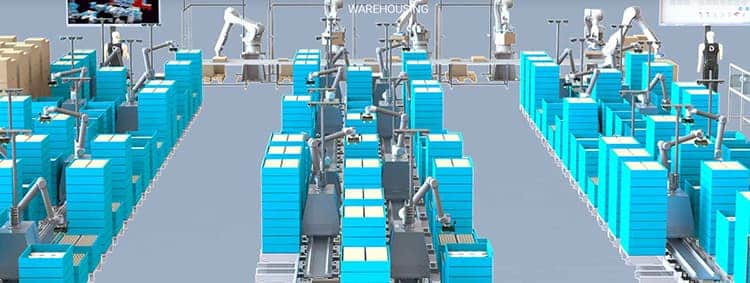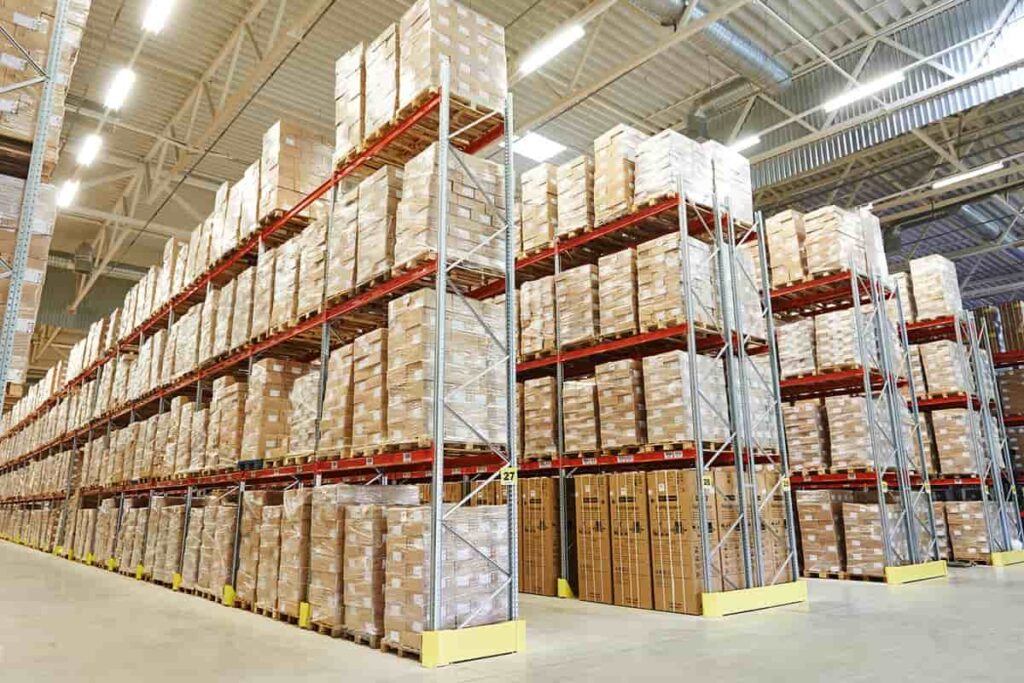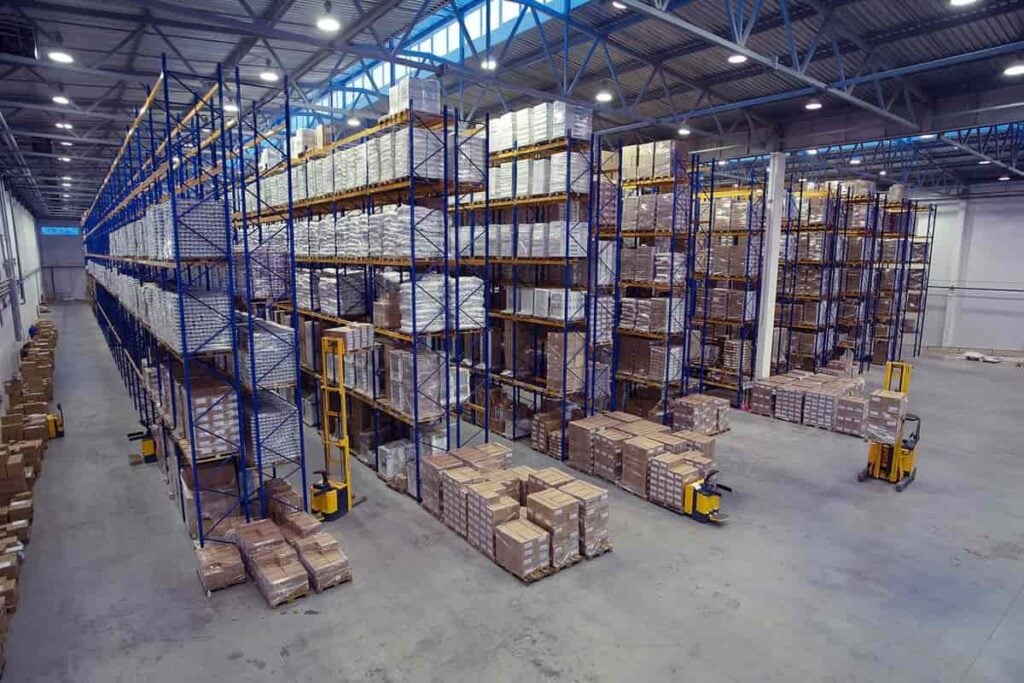7 AI Robotics Startups for Advanced Automation
Table of contents

We recently introduced our lovely readers to the concept of telexistence – the merger of virtual reality and robotics – in which a human plugs into the Matrix to operate a remote humanoid-like machine. At the moment, it’s more of a parlor trick, but practical applications are literally out of this world, with one use case that proposes controlling a robot on the International Space Station from Earth. But an even more impressive achievement will be the day when robots can manipulate objects with dexterity and autonomy in order to free up humans for value-added tasks like pizza delivery (at least until drones take over that job). There are already some very sophisticated industrial robots in manufacturing and warehousing made by companies that you can invest in. However, as is often the case, there are a number of startups challenging the status quo with AI-powered robotics technologies for advanced automation.
Making Smarter Robots
This is actually a topic that we’ve been covering for quite some time, first encapsulated in our article on how artificial intelligence can make smart robots even smarter. The basic premise is that AI and related technologies like computer vision, machine learning, and cloud computing can turn robots into autonomous multi-taskers that can both weld or wield widgets with relative ease. The big difference generally involves moving the task complexity from the machine to the cloud where AI algorithms improve capability by learning to build efficiencies and eliminate mistakes over time through millions of repetitions.
What Can Smarter Robots Do?
For instance, in our recent piece on Bright Machines and Software-Defined Manufacturing, we learned how the company is melding robotics with computer vision and machine learning through a cloud-based management system. Its modular microfactories automate manufacturing across a wide variety of use cases, as part of the robots-as-a-service business model. CloudMinds is a well-funded Chinese AI robotic startup that also takes the hive-mind approach of controlling humanoid robots through a cloud-based platform. It has pushed into the healthcare market with service robots working in smart hospitals.
There is also a strong economic argument for adopting the smart robots-as-a-service business model. The capital expenditure involved in purchasing and installing a robotic system can be substantial beyond the initial purchase price, because equipment breaks down and you can’t just call the plumber to fix an actuator on a robotic arm. While the prevailing wisdom is to buy rather than rent, technology is changing so rapidly that a multi-million-dollar robotics system can become obsolete almost overnight. An AI robotics platform that is task agnostic, on the other hand, can be constantly updated and improved.
And, of course, robots can’t infect you with a deadly virus. At least not on purpose.
An AI Robotic Startup Reborn
While the potential is there for AI robotics to scale manufacturing, packing, picking, sorting, or other services, it’s still not always an easy sell. CloudMinds itself laid off a reported 175 to 225 people out of about 700 employees pre-pandemic this year and also scrubbed plans for an IPO. Another promising AI robotic startup, Rethink Robotics, had developed a “robot operating system” for the cobot or collaborative robot market. The Bahston area company ran out of cash after 10 years but was then snatched up at the last minute by Hahn Group, a German automation manufacturer. It sounds like the perfect match: The problem for software-minded Rethink was reportedly in the hardware, with a robotic arm design that was great for flexibility but less so for precision. No doubt zee Germans have fixed the issue with the latest edition of Sawyer, a robotic arm capable of seven degrees of freedom:

Unfortunately, it looks like the creepy video screen face intended to make Sawyer’s co-workers more comfortable has not been re-configured yet.
Universal AI for Robots
However, the overall scene in AI robotics looks pretty upbeat. Bright Machines reportedly has $100 million in orders to fill. Like the Bahston company, Covariant is a relatively young AI robotic startup out of San Francisco that is seeing success through its software solution.
Founded in 2017, the company has raised $67 million, including a $40 million Series B in May, after coming out of stealth at the start of the year. The company is backed by both an impressive array of investors and scientific research. The roster includes AI pioneers like Geoffrey Hinton and Yann LeCun (both of whom also happened to win the 2018 AI version of the Oscars, the Turing Award), along with some of the leading human brains in both industry (think Google) and academia (AI labs at Stanford and Berkeley). The startup has developed what it calls the Covariant Brain, based on sub-disciplines in AI fields such as imitation learning, deep reinforcement learning, and meta-learning. Covariant claims its AI brain enables any robotic system to learn general abilities like 3D perception and real-time motion planning to manipulate objects without explicit programming.
Picking Out the Best
Covariant has emerged from the shadows with a healthy list of customers, including ABB (ABB), a Swiss-based robotics and automation mega-company with a market cap of more than $55 billion. But, like any good investor, ABB isn’t putting all of its eggs in one startup. The Swiss multinational has also bet on yet another AI robotics startup out of San Francisco called Vicarious, which we first covered exactly five years ago. Since then, the 10-year-old company has landed a total of $150 million in funding and has its own impressive roster of investors aside from ABB. Among the deep pockets is the modern-day tech version of the Roman Triumvirate in Jeff Bezos, Elon Musk, and Mark Zuckerberg, along with Khosla Ventures and Samsung.
Vicarious claims its AI is 6,000 times more efficient than other deep learning robotic systems and that its robots-as-a-service model can scale from five to more than 500 smart machines. Like Covariant, Vicarious automates sorting, picking, tending, and just about any other task involving moving stuff around at speeds and precision better than any human.
Minding the Gap
Another company that we’ve covered before, Kindred.ai out of Toronto and San Francisco, has raised $80 million for its robotics intelligence platform, AutoGrasp, which powers the startup’s SORT robotics arm. Backers include Chinese tech giant Tencent (HK:700). The marketing materials give you the 30,000-foot picture: Using advanced AI algorithms in vision, grasping, and manipulation, AutoGrasp controls robots to operate with human-like intelligence in dynamic environments.

In other words, Kindred.ai has developed a robot capable of displacing four fulfillment center employees per machine. The Gap (GPS) is one of several companies fast-tracking the adoption of Kindred.ai’s robotic sorting system with e-commerce eclipsing brick-and-mortar in the Age of COVID.
A Soft Touch
During the course of our research for this article, we naturally found some new-to-us AI robotics startups, including yet another San Francisco-based company, which seems to confirm speculation that everyone is leaving California except robots and Hollywood actors, people who society idolizes because they excel at pretending to be someone they’re not. Founded in 2008, Dexterity revealed its only known round of funding in July of this year – a $56.2 million Series A that includes some pretty well-known Silicon Valley names like Kleiner Perkins, Lightspeed Venture Partners, and Presidio Ventures. The company is less about providing plug-and-play systems and more focused on custom-designed solutions for warehousing and logistics, from packaging stuff on pallets to organizing kits with components.

Dexterity uses a “generalizable software-driven, hardware-agnostic approach involving intelligent software, controls, and machine learning to realize human-like dexterity with commodity robots and grippers,” according to Lightspeed Venture partner Raviraj Jain, who naturally raved about his firm’s latest investment. And like many of its competitors here, Dexterity offers customers robots-as-a-service.
A Good Eye for AI Robotics
Good hand-eye coordination is key to being dexterous if you’re human or machine. In the case of XYZ Robotics, a Bahston area startup with obvious links to China, the company’s AI robotics platform emphasizes its vision system and ability to change tools on the fly as it picks and sorts merchandise. XYZ Robotics has raised $28 million in disclosed funding, with the latest $20 million coming from a Series A+ in August. The vision component consists of a 3D perception system, advanced motion planning, and deep-learning algorithms that can be ready to get to work in 15 minutes, according to the company. The system has the right tool for 90% of warehouse products across consumer goods, cosmetics, apparel, consumer electronics, medications, and packaged food.

In one use case, XYZ Robotics said it delivered a piece-picking station to a major logistics warehouse where the system was up and running in less than two weeks, with 99.9% accuracy and an expected return on investment of two years.
Skewing Toward Sorting SKUs
By now you probably understand that the major trend here is skewing toward sorting SKUs – AI robotic systems that can identify and grab just about any kind of widget for just about any type of logistics or warehouse job. We’ll end this list with one more example to drive home the point: Founded in 2017, Polish startup Nomagic raised $8.6 million from a Seed round in February, including tech-happy VC firm Khosla Ventures. The company, of course, uses AI and a cloud platform called Magicloader to automate the tedious pick-and-place job of the minimum wage warehouse worker. The company says it can reduce jobs costs by 40% through its AI robotics solution.
Conclusion
The business case for AI robotics in warehousing, logistics, and manufacturing really goes back to the concept of eliminating dull, dangerous, and dirty jobs that presumably nobody really wants except that slacker high school buddy who keeps trying to friend you on Facebook. While automation in these sectors was already well underway before the Age of COVID, the appeal of machines that never get sick is pretty obvious. Now companies are finally solving the so-called “grasping” problem using AI-powered cloud platforms that are hardware agnostic. Concurrently, the “robots-as-a-service” model plays well in an economy that has been retooled to prefer renting over owning.
Sign up to our newsletter to get more of our great research delivered straight to your inbox!
Nanalyze Weekly includes useful insights written by our team of underpaid MBAs, research on new disruptive technology stocks flying under the radar, and summaries of our recent research. Always 100% free.





















The Alphabet-owned company Intrinsic acquired Vicarious in 2022. The AI and robotics divisions merged with Intrinsic, while the research division (including Dileep George) joined DeepMind. As of 2022, Dileep George is a Research Scientist at DeepMind.
Very useful info! Thank you Stan!